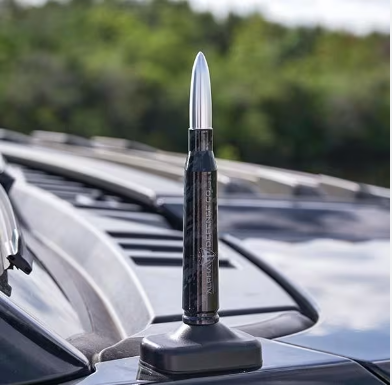In the world of communication technology, antennas play a crucial role in transmitting and receiving signals. Among the various types of antennas available, bullet antennas have gained significant attention for their unique design and performance characteristics. This article explores what bullet antennas are, their benefits, applications, and how they compare to other antenna types.
What is a Bullet Antenna?
A bullet antenna is a compact, often cylindrical antenna designed to enhance wireless communication. Named for its sleek, bullet-like shape, this type of antenna is typically used in various applications, from consumer electronics to commercial and industrial devices. Bullet antennas can operate across different frequency bands, making them versatile for various communication technologies, including Wi-Fi, cellular networks, and GPS.
Key Features of Bullet Antennas
- Compact Design
- Bullet antennas are characterized by their small size and streamlined form. This makes them ideal for applications where space is limited, such as in mobile devices or vehicle installations.
- Wide Frequency Range
- Many bullet antennas are designed to operate over a broad frequency range, allowing them to support multiple communication standards. This flexibility makes them suitable for various wireless technologies.
- Durability
- Typically made from robust materials, bullet antennas are built to withstand harsh environmental conditions. They are often weather-resistant, making them suitable for outdoor applications.
- Omnidirectional Radiation Pattern
- Bullet antenna generally have an omnidirectional radiation pattern, allowing them to receive signals from all directions. This is particularly advantageous in situations where the signal source may not be stationary.
Advantages of Bullet Antennas
- Enhanced Signal Quality
- Bullet antennas are designed to minimize signal loss and interference, leading to improved signal quality. This is crucial for applications requiring reliable data transmission, such as video streaming and real-time communication.
- Easy Installation
- The compact size and design of bullet antennas make them easy to install. Many models come with mounting kits, allowing users to quickly set them up in various environments, from home to office to vehicles.
- Cost-Effective
- Compared to larger, more complex antennas, bullet antennas offer a cost-effective solution for enhancing wireless communication. Their affordability makes them accessible for both personal and commercial use.
- Aesthetic Appeal
- The sleek design of bullet antennas often blends well with modern devices and installations. This makes them a popular choice for tech-savvy consumers and businesses looking for a stylish communication solution.
Applications of Bullet Antennas
- Consumer Electronics
- Bullet antennas are commonly found in smartphones, tablets, and laptops. Their compact design allows manufacturers to incorporate them without significantly increasing the size of the devices.
- Automotive Industry
- In vehicles, bullet antennas are used for GPS navigation, cellular communication, and satellite radio. Their durability and omnidirectional capabilities make them ideal for mobile applications.
- Commercial Uses
- Bullet antennas are prevalent in retail environments, warehouses, and office spaces where reliable Wi-Fi coverage is essential. They can be mounted on walls or ceilings to provide seamless connectivity.
- Industrial Applications
- In industrial settings, bullet antennas are used for machine-to-machine (M2M) communication, IoT devices, and remote monitoring systems. Their rugged construction allows them to operate effectively in challenging conditions.
- Emergency Services
- First responders and emergency services utilize bullet antennas for reliable communication in critical situations. Their compact size and efficient performance make them ideal for use in emergency vehicles.
Comparison with Other Antenna Types
When comparing bullet antennas to other common antenna types, several factors come into play:
1. Size and Form Factor
- Bullet Antenna: Compact and easy to install.
- Yagi Antenna: Larger and often requires more space for installation, typically used for directional applications.
2. Directional vs. Omnidirectional
- Bullet Antenna: Generally omnidirectional, allowing for signal reception from all directions.
- Directional Antennas (e.g., Yagi, Panel): Focus on a specific direction, providing stronger signals in that orientation.
3. Performance
- Bullet Antenna: Provides good performance for general applications.
- High-Gain Antennas: Offer superior performance for specific uses but often at the cost of complexity and size.
4. Installation Flexibility
- Bullet Antenna: Easy to install in various environments.
- Other Antennas: May require more complex installation processes, including alignment and additional mounting hardware.
Conclusion
Bullet antenna represent a modern solution for enhancing wireless connectivity across a wide range of applications. Their compact design, durability, and versatility make them an appealing choice for both consumers and businesses. As technology continues to evolve, the demand for efficient and reliable communication tools will only increase, and bullet antennas are well-positioned to meet this need. Whether in consumer electronics, automotive applications, or industrial environments, bullet antennas provide a sleek and effective means of maintaining connectivity in our increasingly connected world.



